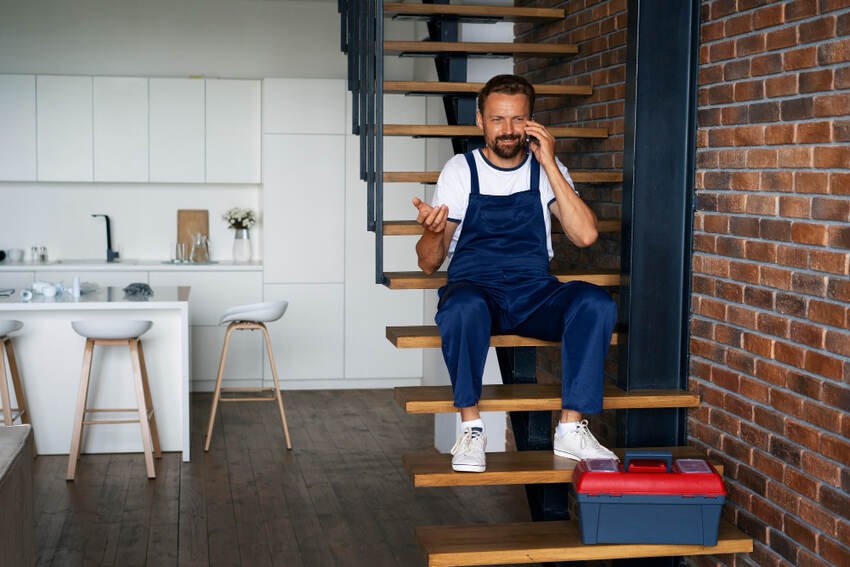As people age, their homes can either become a source of comfort or a barrier to independence. Aging-in-place refers to the practice of adapting one’s living environment to support safety, mobility, and convenience over time, allowing homeowners to remain in familiar surroundings as they grow older. Rather than waiting until challenges arise, more individuals and families are embracing proactive remodeling that anticipates future needs while retaining style and dignity with house remodeling company. The result is a thoughtful blend of universal design, ergonomic detail, and long-term planning.
Rethinking Layouts for Ease and Mobility
One of the first considerations in aging-in-place remodeling is the overall layout of the home. Multi-level houses with narrow halls, tight corners, and complex navigation patterns can quickly become difficult to maneuver. The ideal solution focuses on reducing unnecessary movement and providing single-level living options wherever possible. For many, this means transforming a lower-level guest room into a primary bedroom or relocating laundry facilities to the main floor. Wide doorways and open floor plans support walkers, wheelchairs, and reduced vision, fostering both physical access and emotional ease. Removing thresholds between rooms, especially in living areas and bathrooms, allows for safer and smoother transitions between zones.
Flooring choices also play a pivotal role. Materials should be firm, slip-resistant, and cushioned to absorb impact in case of falls. Non-glare finishes and visual contrast between walls, floors, and countertops enhance depth perception and reduce confusion. Remodelers often recommend continuous flooring throughout the main living areas to eliminate trip hazards and simplify cleaning.
Updating Kitchens for Function and Flexibility
Kitchens are one of the most frequently remodeled spaces in aging-in-place plans. Daily tasks such as cooking, cleaning, and food storage require both strength and coordination. Design upgrades focus on minimizing bending, lifting, and reaching. Counter heights may be adjusted, cabinets outfitted with pull-out shelves or drawers, and appliances installed at accessible levels. Touchless faucets and lever-style handles reduce strain on joints, while induction cooktops provide safer cooking alternatives by eliminating open flames.
Lighting in kitchens must be layered and focused, with task lighting over work surfaces and switches that are easy to reach. Smart lighting systems allow users to control brightness and timers from mobile devices or voice commands. Pantry organization also plays a role, with labeled shelves and easy-grip containers simplifying access.
For homeowners with declining mobility or vision, even small changes such as contrasting edges on countertops or drawer fronts can improve usability. The goal is to support independence without sacrificing the warmth and creativity that kitchens traditionally offer.
Bathrooms Designed for Safety and Serenity
Bathrooms can pose serious risks if not properly designed. Slippery floors, hard surfaces, and tight quarters make falls more likely and recovery more difficult. In aging-in-place remodeling, bathrooms are reimagined with safety as the foundation and comfort as the objective. Walk-in showers with built-in seating replace traditional tubs, offering both accessibility and a spa-like experience. Grab bars, often disguised as stylish towel racks or wall accents, support balance and movement without signaling disability.
Non-slip tiles, handheld shower heads, and anti-scald valves contribute to a safer bathing routine. Vanities may be lowered or made wheelchair-friendly, while storage can be modified to avoid high shelves or deep cabinets. Toilets with elevated seats and ergonomic flush mechanisms reduce strain. Proper lighting—including night lights or sensor-driven LEDs—helps navigate the space after dark.
Bathrooms in aging-in-place homes often become sanctuaries of well-being rather than utilitarian zones. Soft colors, natural materials, and thoughtful design elements contribute to mental calm, reinforcing the connection between physical and emotional health.
Entryways and Outdoor Considerations
The path into the home should be just as inviting and navigable as the interior. Remodeling often includes regrading walkways, installing ramps or low-rise steps, and adding slip-resistant surfaces to porches. Sensor lights at entry points increase visibility, while smart doorbells and locks offer security with minimal effort. Covered entrances and wider doors help accommodate mobility aids and reduce exposure to weather during entry.
Outdoor spaces like patios and gardens are also evaluated for access. Raised garden beds allow users to tend plants without kneeling or bending. Seating is integrated into landscaping, and walking paths are leveled and well-lit. These spaces encourage interaction with nature, provide relaxation, and support mental engagement—all of which are important for long-term living.
Smart Home Technology and Aging Gracefully
Technology is becoming a major player in aging-in-place design. Voice-activated systems, remote-controlled thermostats, and automated lighting create an environment that responds to user needs without physical strain. Emergency response systems, health monitoring devices, and fall detectors add layers of safety. Integrated systems that can be managed from smartphones or tablets promote autonomy and reduce reliance on caregivers.
Importantly, technology must be intuitive and non-disruptive. Interfaces should be simple, feedback should be clear, and support must be available. Designing tech into the remodeling process—not as an afterthought—ensures compatibility and reduces clutter. Whether it’s adjusting blinds automatically or getting reminders to take medications, smart upgrades help make aging less about limitations and more about empowerment.
A Home That Supports Every Season of Life
Remodeling a home for aging-in-place isn’t just a practical decision—it’s an act of care, preparation, and resilience. The objective isn’t to create a clinical space but a living environment that evolves gracefully with its inhabitants. It’s about making subtle adjustments that encourage freedom, preserve comfort, and minimize disruption as needs change.
Designing for long-term living requires empathy and imagination. It asks homeowners and remodelers to look beyond present routines and envision a future filled with possibility. With the right upgrades, a home becomes not just a place to reside but a space to thrive. It honors a lifetime of memories while creating a framework for the chapters yet to be written.
Read Dive is a leading technology blog focusing on different domains like Blockchain, AI, Chatbot, Fintech, Health Tech, Software Development and Testing. For guest blogging, please feel free to contact at readdive@gmail.com.





